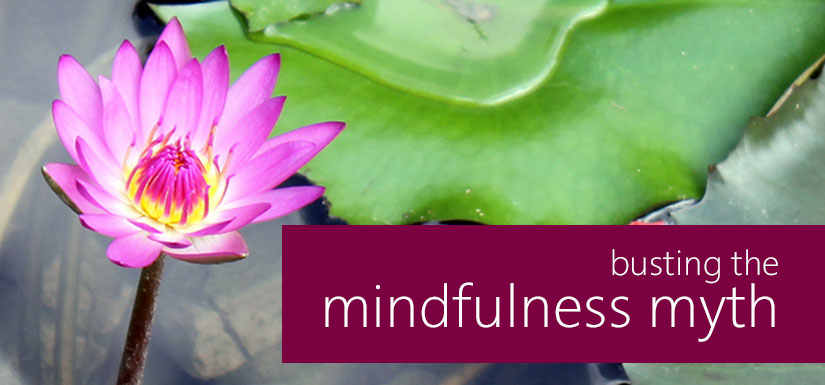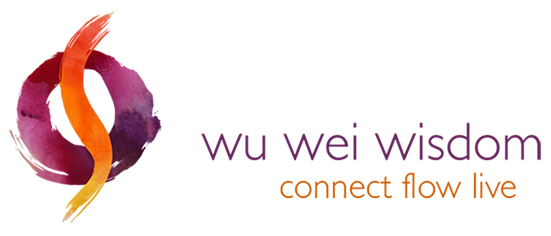busting the mindfulness myth

summary
Mindfulness can be used as an effective option for managing stress, anxiety and chronic pain, as well as boosting your mental clarity, productivity and enjoyment of life.
In this teaching we tackle the three most common misunderstandings about Mindfulness meditation and you’ll discover how the practice has radically transformed David’s life.
You’ll also learn simple and practical ways to make Mindfulness part of your daily routine.
listen to the podcast
full teaching transcript
David James Lees:
Mental Health Awareness Week in the UK this month focuses on how the practice of Mindfulness can boost your health and wellbeing. There has been a lot of talk about mindfulness in the media recently but many people still misunderstand what it involves and question its rewards and benefits.
I’m a huge fan of mindfulness and I’d like to expose the most common untruths about this practice and show you how easy, yet powerful it can be. But first I’d like to share a little about how I discovered mindfulness over 40 years ago and how it transformed my life…
My Mindfulness story
As a child, after the sudden and traumatic death of my father, I developed a profound stutter. After many years of unsuccessful speech and drug therapy my consultant finally told me there was nothing more that could be done for me and that I’d just have to learn to ‘live with it’.
Being told this as a teen I thought my life had come to an end. Desperate to find an alternative solution, by chance, I discovered meditation and the practice of mindful breathing. It took a few sessions to pick up the basics but, through the practice of mindfulness I learnt how to calm and still my thoughts and emotions that were so badly affecting my speech.
I now still practice mindfulness every day to manage my stutter and keep my mind calm and focussed rather than allowing my thoughts and my speech it to race ahead out of control as they used to. I am totally now liberated – mindfulness has set me free. I have taken back control of my life – my stutter does not control me.
Today, I am privileged to be able to pass on the same simple mindfulness techniques I first learnt so many years ago to my therapy clients and meditation students at, as well as everyone I meet through my workshops and talks.
Practicing Mindfulness on a daily basis is a great way to take responsibility your mental, emotional and physical health and wellbeing. The rewards of ‘living mindfully in the moment’ are huge and are increasingly well publicised and yet I do sometimes encounter reluctance and negativity when I first suggest mindfulness as a health maintenance practice.
So what stops someone from trying Mindfulness?
These are the most 3 most common reasons I hear:
‘Mindfulness meditation is religious – I’m just not into that’.
Mindfulness meditation is NOT a religious practice. You don’t have to have an understanding of or affiliation to any particular religious group or way of life to practice Mindfulness.
Mindfulness-Based Cognitive Therapy (CMBT) and Mindfulness-Based Stress Reduction techniques (MBSR) are being scientifically and rigorously researched and developed at academic institutions around the world and the results confirm its many benefits.
Another common misunderstanding I hear is:
‘Mindfulness means emptying my mind or losing control of my mind – I just can’t do this or I won’t do this.’
Mindfulness is all about being in the moment and focussing within on the ‘here and now’. I’ve practiced mindfulness for several decades and I have not once emptied my mind of all thoughts or lost control – this is not the point, in fact it’s the complete opposite of this!
Being fully present in the moment means first going within: breathing deeply, calmly and rhythmically… notice your thoughts, allow a little time for them to still and settle, don’t let them rush ahead to the future or back to the past – bring them into the ‘now’. This may take a few moments or maybe longer – be patient, don’t rush – You’re worth it!
When you have found this inner calm, then you can then turn your attention to the outside world: notice your surroundings, let your mind and all your senses be fully stimulated by whatever is happening right here, right now, so that you can savour and appreciate every second of this moment and every moment.
You’re now practicing mindfulness. It’s this simple!
This brings me onto the final untruth I often hear about mindfulness…
‘Mindfulness will take lots of time or I’ll need to be in a special environment – I just don’t have access to this’.
Mindfulness only requires as little as 5 to 10 minutes practice a day for you to begin to experience its rewards. You don’t need to attend special classes or undertake extensive training to practice mindfulness, although these can be great way for some to get you started, or to help you maintain the practice as an enjoyable and fun part of your weekly routine and meet like-minded people.
You certainly don’t need to meditate crossed legged for hours in a serene temple to achieve a state of mindfulness! Mindfulness can be practiced wherever you are and whatever you are doing. Whether you’re indoors or outdoors, at home, at work, by yourself or with family, friends or work colleagues, I’m doing it right now as I talk to you! You probably have already practiced mindfulness and don’t even realise it!
I’d like you to think about a time when you were totally in the flow or ‘zone’ of enjoying doing something, when you just lost track of time because you were so absorbed by what was happening in that moment. This could be when you’re out walking and enjoying nature, having fun with your children or playing a sport, listening to a piece of great music, doing some cooking or gardening, collaborating on an intensive project at work, or when learning an new skill or hobby.
It’s times such as these, when you’re fully engaged in what’s happening, when your mind is calm and focused, and you’re absorbing everything around you, that you’re being authentically ‘mindful’.
My point is: you can be mindful without even knowing it and actually this is what you should be aiming for during every moment of your day, not just for one hour a week in a meditation class!
A simple 5 minute Mindfulness technique
Mindfulness is an effective, drug free option for managing stress, anxiety and chronic pain. It will boost your mental clarity, productivity and more importantly, your enjoyment of life.
At first it can take a little practice to be able to calm and focus you mind so I’d like to now guide you through an introductory 5 minute mindfulness meditation and visualisation that will help you to do this.
You can use this simple technique whenever you need to… [listen to the audio recording at the top of the page]
want more support
Discover how David can help you rebalance your health and wellbeing with his one-to-one sessions.
You can also:
- join our free Wu Wei Wisdom Facebook Group where you’ll find lots more guidance and discussion
- sign up for our free weekly email newsletter with all our latest teachings and news.
If you have any questions or would like more information on our work please contact us – we’re always happy to help.
like this post?
Please share it! This helps to pass on the positive Qi of our work to others who may benefit…
